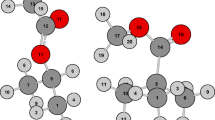Abstract
The effect of surface free energy on the orientation of nuclei on a substrate is examined. In general, the orientation of the nuclei is not determined by minimizing the nucleus-substrate interfacial free energy alone: all interfacial anisotropies must be considered. That orientation preferences should result from anisotropies in the substrate-nucleus interfacial free energies is obvious, but we find that strong orientation effects are present even if this energy is assumed to be independent of the nucleus orientation, provided that the nutrient-nucleus interfacial free energies are anisotropic. Furthermore, varying the magnitude of even an isotropic nucleus-substrate energy will change the orientation of the nuclei. The theory points to some simple rules for prediction of nucleation orientations.
Similar content being viewed by others
References
J. W. Cahn and J. E. Taylor, Phase Transformations ’87 (The Institute of Metals), to be published.
J. E. Taylor, Bull. Amer. Math. Soc. 84,568 (1978).
W. L. Winterbottom, Acta Metall. 25,303 (1967).
J. K. Lee and H. I. Aaronson, Scripta Met. 5,1451 (1974).
D. W. Hoffman and J. W. Cahn, Surf. Sci. 32,368 (1972).
J. W. Cahn and D. W. Hoffman, Acta Metall. 22,1205 (1974).
Author information
Authors and Affiliations
Rights and permissions
About this article
Cite this article
Taylor, J.E., Cahn, J.W. Theory of orientation textures due to surface energy anisotropies. J. Electron. Mater. 17, 443–445 (1988). https://doi.org/10.1007/BF02652131
Received:
Issue Date:
DOI: https://doi.org/10.1007/BF02652131




